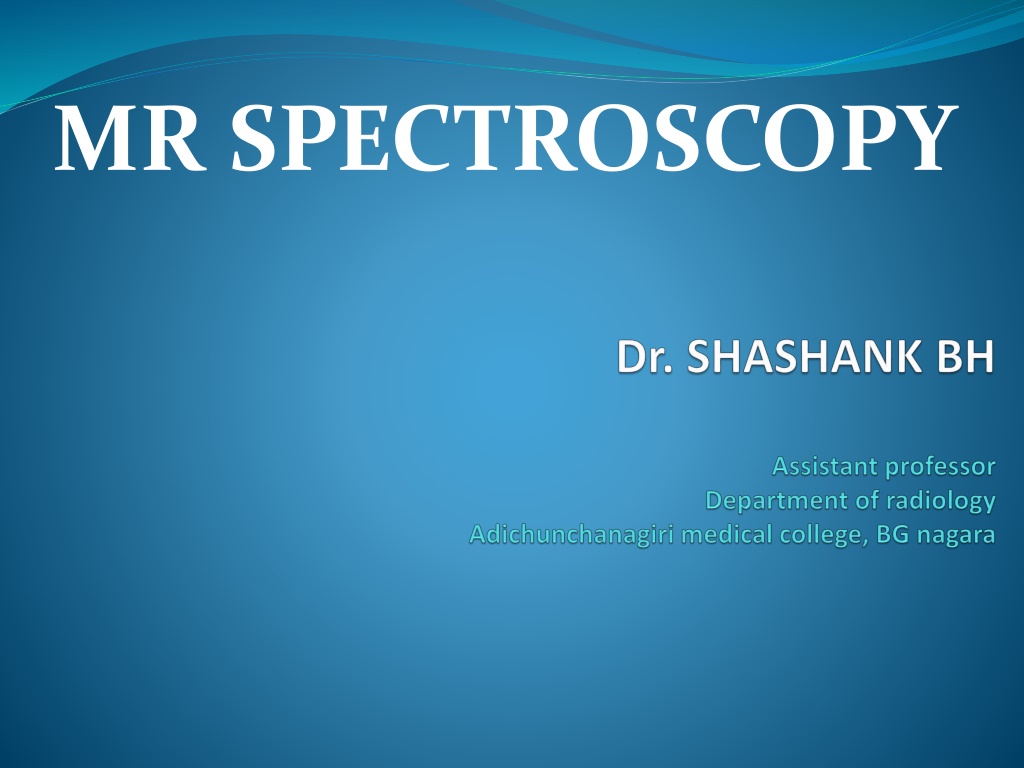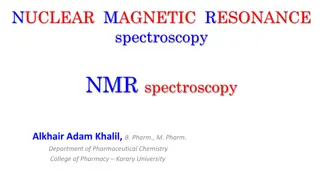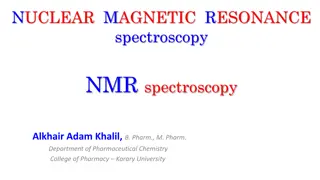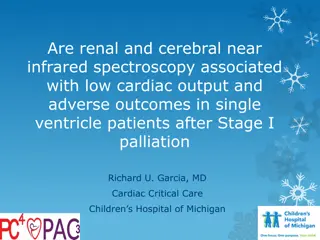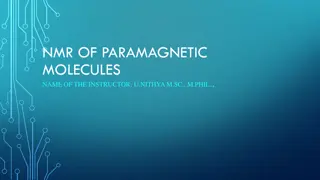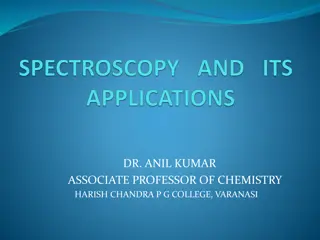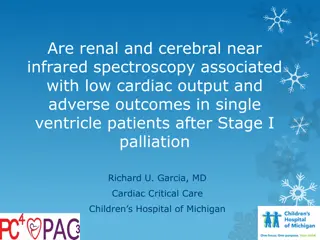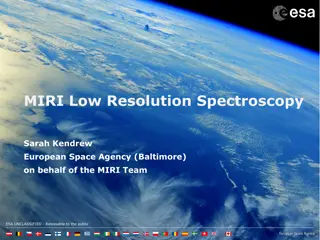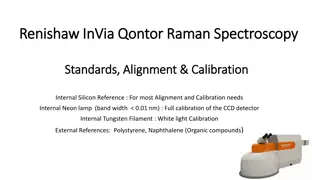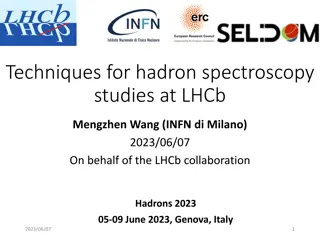MR SPECTROSCOPY
MR Spectroscopy is a technique for analyzing in vivo chemical environments to study neurophysiology and neurochemistry. This quantitative noninvasive assay allows for the identification of various metabolites such as NAA, choline, creatine, lipids, and lactates. Data collected are analyzed in the time domain to generate anatomic images, with the spatial resolution for MRS being significantly higher than MRI. The process of making the magnetic field homogeneous, known as shimming, is crucial for the accuracy of the results. Understanding the basic principles of MR spectroscopy involving chemical shifts and J-coupling is essential for interpreting the spectra. The echo time (TE) parameter plays a crucial role in MRS, with long TE and short TE methods offering distinct advantages in spectral simplification and peak detection. Data acquisition through single-voxel Magnetic Resonance Spectroscopy further enhances the capabilities of this valuable imaging tool.
Download Presentation

Please find below an Image/Link to download the presentation.
The content on the website is provided AS IS for your information and personal use only. It may not be sold, licensed, or shared on other websites without obtaining consent from the author.If you encounter any issues during the download, it is possible that the publisher has removed the file from their server.
You are allowed to download the files provided on this website for personal or commercial use, subject to the condition that they are used lawfully. All files are the property of their respective owners.
The content on the website is provided AS IS for your information and personal use only. It may not be sold, licensed, or shared on other websites without obtaining consent from the author.
E N D
Presentation Transcript
MR SPECTROSCOPY It s a technique for defining in vivo chemical environment and allowing analysis of neurophysiology and neurochemistry Quantitative noninvasive assay of metabolites like NAA, choline, creatine, lipids, lactates, etc.
MRI- Data collected are analyzed in time domain to generate anatomic image MRS- Time domain converted to frequency domain to form distribution of intensities of chemical groups vs their larmor frequencies The spatial resolution for MRS is a thousand times larger than what is typically achieved for MRI The homogeneity required for MRI is about 0.5 ppm whereas for MRS it is about 0.1 ppm. The process of making the magnetic field homogeneous is called as shimming.
Basic Principles Magnetic resonance frequency of an atomic nucleus is altered by its chemical environment, which causes a small change in the resonance frequency called chemical shift Different metabolites resonate at different frequencies along the horizontal / chemical shift axis. Metabolite signal is identified on the horizontal axis by it s chemical shift.
J-coupling In addition to chemical shifts, the spectrum is also modulated by J-coupling J-coupling is the result of an internal indirect interaction of two spins via the intervening electron structure of the molecule. The coupling strength is measured in Hertz and is independent of the external B 0 field strength. J-coupling results in a modulation of signal intensity depending on sequence type, particularly the echo time (TE).
Echo Time The most important parameter is the echo time (TE) in mrs. MR spectroscopy can be separated into long TE (typically TE > 135 ms) and short TE (TE 35 ms) methods. Long echo times simplifies spectra because the number of detectable peaks is reduced and the remaining peaks are more readily identifi ed. Short TE MRS allows the detection of an increased number of metabolites and has a signal-to-noise advantage over long TE.
Data Acquisition Single-Voxel Magnetic Resonance Spectroscopy Single-voxel (SV) MRS measures the MR signal of a single selected region of interest whereas signal outside this area is suppressed. Manufacturers generally provide PRESS (Point Resolved Spectroscopy), STEAM (Stimulated Echo Acquisition Mode) , and ISIS (Image Selected In Vivo Spectroscopy) These sequences differ in how radiofrequency pulses and gradient pulses are arranged in order to achieve localization.
PRESS STEAM 90----180----180 90----90----90 Short TE Demo short T2 Metabolites Less SNR Long TE Less sensitive to short T2 Metabolites More SNR ISIS: Image Selected In vivo Spectroscopy -Three frequency selective inversion pulses are applied in presence of the orthogonal gradients. Fourth non- selective pulse is used for the observation of signal. -ISIS is used in the 31P spectroscopy.
CSI: Chemical Shift Imaging /Magnetic Resonance Spectroscopic Imaging (MRSI) - CSI is used for the multivoxel spectroscopy, where a large area is covered and divided into multiple voxels. Slice selection can be achieved with a selective RF pulse as for MR imaging CSI is an excellent technique to obtain metabolic maps
Steps in MRS Acquisition Patient positioning Shimming- Optimization of the magnetic field homogeneity is done over the entire volume detected by the receiver coil. Acquisition of MR images for localization- Images are obtained in all three planes for placement of a voxel.
Selection of MRS parameters- TR and TE are important parameters. Improved SNR is obtained at a longer TR. - Longer TE- choline, creatine, NAA and lactate are visible. Short TE- lipid, glutamate, glutamine, GABA and inositol Selection of VOI (volume of interest)- SVS can be used for local or diffuse diseases. MVS is used in irregularly shaped large lesion. -
Water suppression- Water peak is suppressed so that smaller metabolite peaks are visible. Water peak suppression is done by CHESS (Chemical shift selective spectroscopy) technique. MRS data collection- On modern machines, SVS takes 3 6 minutes and CSI takes up to 12 minutes for data acquisition. Data processing and display- Acquired data is processed to get spectrum and spectral maps. Zero point of spectrum is set in the software itself by frequency of a particular compound called Tetramethylsilane (TMS).
Interpretation- The area under the peak of any metabolite is directly proportional to the number of spins contributing to the peak. Look at peak separation Identify the Normal & Abnormal Metabolites Assess Metabolite Ratios using Cr as internal reference
Chemical compound Chemical shift (ppm) Comments Lipids (lip) 0.9 1.4 An indicator of necrosis , myelin sheath disruption Lactate (Lac) Indicates anaerobic glycolysis. 1.3 N-Acetylaspartate (NAA ) Marker of neuronal and axonal viability 2.0 Glutamate (Glu) Glutamine (Gln) Main ammonia 2.1 2.5 3.0, 3.9 Cerebral metabolism marker Creatine/ Phosphocreatine Choline (Cho) Reflects cellular proliferation 3.2 Myo-inositol (ml) Glial marker; Cell volume regulator 3.6
Role of MRS Evaluation of neoplasms Infection Infarction & Hypoxia Epilepsy Metabolic diseases Neurodegenerative diseases
